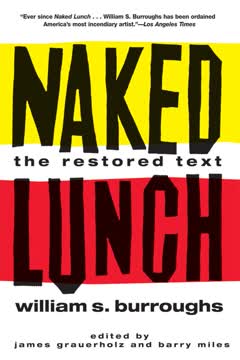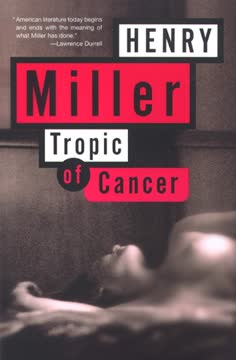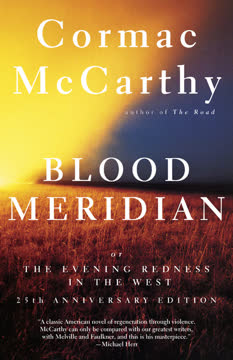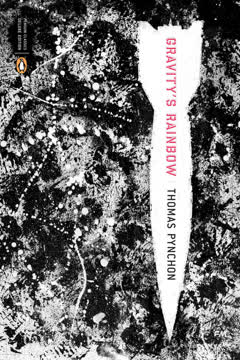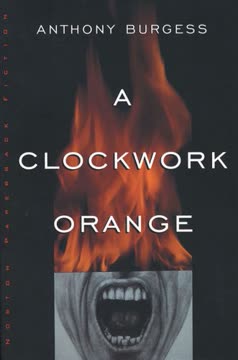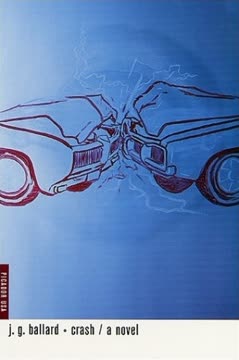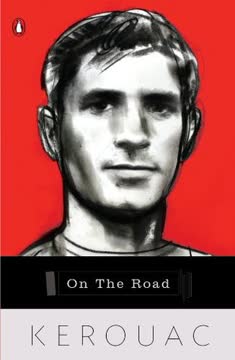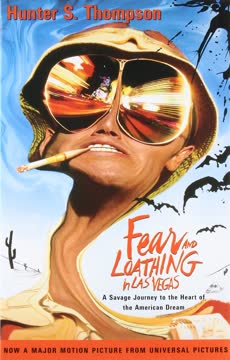Plot Summary
Heat Closing In
William Lee, a junkie navigating the underworld of addiction, feels the oppressive heat of law enforcement closing in. He escapes a close call with the police, highlighting the constant tension between his need for drugs and the authorities' pursuit. Lee's life is a chaotic dance of evasion and survival, driven by his addiction to heroin. His world is a blur of fleeting connections and desperate measures, as he maneuvers through the urban landscape, always one step ahead of capture. The narrative captures the relentless cycle of addiction, where every moment is a precarious balance between scoring the next fix and avoiding the law.
Benway's Manipulations
Dr. Benway, a manipulative figure in the world of Interzone, employs psychological and physical control methods to maintain power. His expertise in interrogation and brainwashing reveals a chilling disregard for human dignity. Benway's methods are a blend of scientific detachment and sadistic pleasure, as he experiments on individuals to break their will. His presence in Interzone is a testament to the pervasive corruption and moral decay that defines the city. Through Benway, the narrative explores themes of control, dehumanization, and the dark side of scientific advancement.
Interzone's Chaos
Interzone, a city teetering on the edge of chaos, is a melting pot of cultures, vices, and power struggles. It is a place where the boundaries between reality and hallucination blur, and the inhabitants navigate a world of constant danger and temptation. The city is a microcosm of global conflicts, with various factions vying for control. Amidst the chaos, Lee finds himself entangled in a web of intrigue and betrayal, as he attempts to navigate the treacherous landscape. Interzone serves as a backdrop for the exploration of themes such as addiction, power, and the human condition.
The Algebra of Need
The concept of "The Algebra of Need" encapsulates the insatiable nature of addiction, where the addict's life is reduced to a series of transactions to satisfy their cravings. This relentless pursuit of the next fix becomes a mathematical certainty, as the addict's existence is consumed by the need for drugs. The narrative delves into the psychological and physiological aspects of addiction, illustrating how it strips individuals of their humanity and autonomy. Through this lens, the story examines the broader implications of addiction on society and the individual.
The Exterminator's Task
The Exterminator, a figure tasked with eradicating threats within Interzone, operates in the shadows, targeting those who disrupt the fragile balance of power. His role is to maintain order amidst the chaos, using any means necessary to eliminate those who pose a danger to the status quo. The Exterminator's actions highlight the moral ambiguity and ethical dilemmas faced by those who operate within the city's underbelly. Through his character, the narrative explores themes of justice, morality, and the cost of maintaining control in a lawless environment.
The Market's Pulse
The Market in Interzone is a bustling hub of activity, where the city's diverse inhabitants converge to trade goods, services, and information. It is a place where the lines between legality and illegality blur, and the pulse of the city can be felt in the frenetic energy of its transactions. The Market serves as a microcosm of Interzone itself, reflecting the city's complexity and contradictions. Through the Market, the narrative explores themes of commerce, survival, and the interconnectedness of the city's inhabitants.
Factualist Resistance
The Factualists, a group opposed to the manipulative Senders, represent a resistance movement within Interzone. They seek to counteract the Senders' attempts to control and manipulate the population through telepathic broadcasts. The Factualists' struggle is a fight for autonomy and truth in a world dominated by deception and coercion. Through their efforts, the narrative examines themes of resistance, freedom, and the power of information in shaping reality.
Characters
William Lee
Lee is a junkie constantly evading the law while navigating the chaotic world of Interzone. His life is a series of desperate maneuvers to secure his next fix, highlighting the relentless grip of addiction. Lee's journey is marked by fleeting connections and a constant struggle for survival, as he attempts to maintain a semblance of control in a world that is constantly slipping away.
Dr. Benway
Benway is a sinister figure who uses psychological and physical control methods to maintain power in Interzone. His expertise in interrogation and brainwashing reveals a chilling disregard for human dignity, as he experiments on individuals to break their will. Benway's presence in the narrative underscores the pervasive corruption and moral decay that defines the city.
The Exterminator
Tasked with eliminating threats within Interzone, the Exterminator operates in the shadows, targeting those who disrupt the fragile balance of power. His role highlights the moral ambiguity and ethical dilemmas faced by those who operate within the city's underbelly, as he uses any means necessary to maintain order amidst the chaos.
Fats Terminal
Fats is a figure who has learned "The Algebra of Need", representing the insatiable nature of addiction. His existence is consumed by the relentless pursuit of the next fix, illustrating how addiction strips individuals of their humanity and autonomy. Fats serves as a symbol of the broader implications of addiction on society and the individual.
The Sailor
The Sailor is a character who navigates the underworld of Interzone, using his connections and influence to manipulate those around him. His presence in the narrative highlights the interconnectedness of the city's inhabitants and the complex web of relationships that define life in Interzone.
The Factualists
The Factualists are a group opposed to the manipulative Senders, representing a resistance movement within Interzone. They seek to counteract the Senders' attempts to control and manipulate the population, fighting for autonomy and truth in a world dominated by deception and coercion.
Plot Devices
The Algebra of Need
This concept encapsulates the insatiable nature of addiction, where the addict's life is reduced to a series of transactions to satisfy their cravings. It illustrates how addiction strips individuals of their humanity and autonomy, serving as a lens to examine the broader implications of addiction on society and the individual.
Interzone
Interzone serves as the backdrop for the narrative, a city teetering on the edge of chaos, where the boundaries between reality and hallucination blur. It is a melting pot of cultures, vices, and power struggles, reflecting the complexity and contradictions of the human condition.
Factualist Resistance
The Factualists' struggle against the Senders represents a fight for autonomy and truth in a world dominated by deception and coercion. Their efforts highlight themes of resistance, freedom, and the power of information in shaping reality.
Analysis
"Naked Lunch" is a profound exploration of addiction, control, and the human condition. Through its vivid depiction of Interzone and its inhabitants, the narrative delves into the insatiable nature of addiction and the moral ambiguities of power and control. The novel challenges readers to confront the darker aspects of human nature and society, questioning the boundaries of reality and the cost of maintaining order in a chaotic world. Through its complex characters and intricate plot devices, "Naked Lunch" offers a searing critique of modern life, highlighting the pervasive influence of addiction and the struggle for autonomy in a world dominated by manipulation and coercion.
Last updated:
FAQ
Synopsis & Basic Details
What is Naked Lunch: The Restored Text about?
- A Disjointed Odyssey: Naked Lunch follows William Lee, a drug addict, through a series of hallucinatory, non-linear vignettes set in various locations, most notably the dystopian "Interzone." The narrative, often shifting in perspective and reality, depicts Lee's desperate pursuit of drugs, his encounters with grotesque characters, and his observations on addiction, control, and societal decay.
- Exploration of Addiction's Grip: At its core, the novel is a raw, unflinching portrayal of heroin addiction, described by Burroughs as "The Sickness." It delves into the physiological and psychological torment of withdrawal, the parasitic relationship between addict and pusher, and the dehumanizing "Algebra of Need" that governs their existence.
- Critique of Control Systems: Beyond drug addiction, the book satirizes and dissects various forms of control—governmental, medical, sexual, and psychological—through characters like Dr. Benway, a master of demoralization, and the omnipresent "Senders" who manipulate minds. It presents a world where freedom is an illusion and individuals are constantly subjected to unseen forces.
Why should I read Naked Lunch: The Restored Text?
- Unparalleled Literary Experimentation: Readers seeking a truly groundbreaking and challenging literary experience will find Naked Lunch a pivotal work. Its non-linear, cut-up style, grotesque imagery, and unflinching honesty pushed the boundaries of narrative, influencing generations of writers and artists.
- Profound Social Commentary: Beneath its shocking surface, the novel offers a scathing critique of power structures, bureaucracy, and the insidious ways society controls individuals. It forces readers to confront uncomfortable truths about human nature, addiction, and the mechanisms of oppression, making it highly relevant for Naked Lunch analysis of societal control.
- A Unique Vision of Reality: Burroughs crafts a world that blurs the lines between dream, hallucination, and reality, inviting readers into a deeply subjective and often terrifying landscape. It's a journey into the subconscious, offering insights into the nature of perception and the human psyche that are both disturbing and revelatory.
What is the background of Naked Lunch: The Restored Text?
- Autobiographical Roots in Addiction: William S. Burroughs drew heavily from his own fifteen-year struggle with heroin addiction, particularly his experiences in Mexico City, New Orleans, and Tangier. The raw, visceral descriptions of withdrawal and the drug underworld are deeply personal, lending an authentic, albeit distorted, lens to the narrative.
- Beat Generation Context: The novel emerged from the Beat Generation literary movement of the 1950s, sharing its themes of rebellion against conformity, exploration of alternative lifestyles, and experimental prose. Jack Kerouac famously suggested the title, encapsulating the moment "when everyone sees what is on the end of every fork."
- Censorship and Legal Battles: Naked Lunch gained notoriety for its explicit content, leading to obscenity trials in the U.S. in the early 1960s. Its eventual vindication in 1966, with the Massachusetts Supreme Judicial Court ruling it had "redeeming social importance," was a landmark decision for freedom of speech and literary expression.
What are the most memorable quotes in Naked Lunch: The Restored Text?
- "Naked Lunch – a frozen moment when everyone sees what is on the end of every fork.": This iconic line from the Introduction defines the book's core philosophy, suggesting a brutal, unvarnished revelation of truth, stripped of illusion. It encapsulates the raw honesty and confrontational nature of Burroughs's vision, a key insight for Naked Lunch meaning.
- "The face of evil is always the face of total need.": This quote, central to "The Algebra of Need," distills Burroughs's understanding of addiction and its moral implications. It highlights how absolute dependence can strip away humanity, reducing individuals to primal, amoral agents driven solely by their craving, a profound statement on themes in Naked Lunch.
- "I deplore brutality. It's not efficient.": Uttered by Dr. Benway, this chilling statement reveals the insidious nature of modern control. It's not about overt violence but about subtle, psychological manipulation that breaks the spirit more effectively, showcasing Benway's sinister Dr. Benway motivations and the novel's critique of institutional power.
What writing style, narrative choices, and literary techniques does William S. Burroughs use?
- Non-Linear, Fragmented Narrative: Burroughs employs a "cut-up" technique, presenting vignettes and episodes in a non-chronological, often disorienting order. This fragmentation mirrors the fractured consciousness of addiction and challenges traditional narrative expectations, making Burroughs writing style highly experimental.
- Grotesque and Visceral Imagery: The prose is rich with shocking, often repulsive descriptions of bodily functions, decay, and violence. This deliberate use of the grotesque serves to confront the reader, stripping away polite societal veneers to reveal raw, uncomfortable realities, a hallmark of Naked Lunch literary techniques.
- Satire and Dark Humor: Despite its grim subject matter, the novel is infused with biting satire and black humor, particularly in its critiques of bureaucracy, medicine, and politics. This sardonic tone often underscores the absurdity and horror of the situations depicted, adding layers to Naked Lunch analysis beyond mere shock value.
Hidden Details & Subtle Connections
What are some minor details that add significant meaning?
- The Ubiquitous "Old Grey Mare": The recurring phrase "The Old Grey Mare ain't what she used to be" or references to "humping the Old Gray Mare" (County Clerk chapter) subtly links sexual degradation, aging, and the futility of past pleasures to the pervasive decay of the world. It symbolizes a lost vitality and the desperate, often perverse, attempts to recapture it, a subtle Naked Lunch symbolism.
- The Candiru Fish as Invasive Threat: The mention of the candiru, a small Amazonian fish that invades bodily orifices, appears multiple times (e.g., "Benway," "A.J.'s Annual Party"). This seemingly minor detail symbolizes the invasive, inescapable nature of addiction, control, and sexual violation, highlighting the vulnerability of the body and mind to external forces, a chilling Naked Lunch hidden meaning.
- The "Smell of Death" in Withdrawal: Burroughs repeatedly describes the "colorless no-smell of death" or the "death smell" during junk withdrawal (e.g., "Atrophied Preface"). This sensory detail goes beyond mere description, becoming a motif for the addict's liminal state between life and death, a profound internal decay that is paradoxically both odorless and overwhelmingly present, deepening the Naked Lunch addiction analysis.
What are some subtle foreshadowing and callbacks?
- The Rube's Demise and "The Mark Inside": Early in "Heat Closing In," the Rube's descent into madness and eventual abandonment ("The Mark Inside") foreshadows the ultimate self-destruction inherent in unchecked addiction and parasitic relationships. His physical and mental deterioration serves as a grim premonition for other characters, illustrating character development in Naked Lunch.
- Benway's Early Departure from Annexia: Benway's "precipitate departure from Annexia" after his "Total Demoralization" assignment (Benway chapter) subtly foreshadows the chaotic release of the R.C. patients later. It suggests a pattern of his destructive "experiments" leading to widespread societal breakdown, a recurring theme in Dr. Benway's methods explained.
- The "Hot Shot" and Informers: The detailed description of a "hot shot" (poisoned junk) given to informers in "Heat Closing In" is a grim callback to the constant paranoia and betrayal within the drug underworld. It establishes the brutal consequences of informing, a pervasive undercurrent of fear and distrust that permeates all relationships in the novel, a key aspect of Naked Lunch themes.
What are some unexpected character connections?
- Lee as the "Invisible Man": Lee is referred to as "El Hombre Invisible" by Spanish boys (Hospital chapter), suggesting his detachment and spectral presence due to heavy addiction. This connects him to the broader theme of dehumanization and the loss of self, making William Lee's identity fluid and symbolic rather than fixed.
- The President as an "Oblique Addict": The revelation that the President is an "Oblique Addict" who recharges through Lee (Hospital chapter) creates a bizarre, parasitic power dynamic. This unexpected connection highlights how addiction permeates all levels of society, even the highest, and how power itself can be a form of dependence, a unique insight into Naked Lunch power dynamics.
- The Exterminator's Shifting Identity: The Exterminator, initially presented as an enforcer, later reveals his true "assignment: Find the live ones and exterminate. Not the bodies but the 'molds'" ("The Exterminator Does a Good Job"). This blurs his identity with the narrative voice, suggesting he is an agent of a deeper, more abstract form of control, connecting him to the "human virus" concept and offering a deeper Exterminator motivation analysis.
Who are the most significant supporting characters?
- A.J., The Trickster Agent: A.J. (alias Placenta Juan, After Birth Tycoon) is a chaotic, amoral figure who embodies disruption and subversion. His "practical jokes" and schemes, from releasing piranhas to sabotaging anti-fluoride societies, are not random but calculated acts of destabilization, making him a central figure in Interzone power struggles and a key to understanding A.J. motivations.
- The County Clerk, Bureaucracy Incarnate: This character, trapped in a decaying courthouse, symbolizes the suffocating, self-perpetuating nature of bureaucracy. His endless anecdotes and inability to process anything efficiently highlight the absurdity and ultimate futility of rigid systems, a satirical element crucial to Naked Lunch social commentary.
- The Mugwumps, Longevity Dealers: These liverless, sweet-eating creatures who secrete life-prolonging fluid (The Black Meat chapter) represent a perverse form of immortality and parasitic existence. Their role in the Interzone market underscores the transactional nature of life and the addictive quality of even "longevity agents," adding a layer of Naked Lunch symbolism to the pursuit of eternal life.
Psychological, Emotional, & Relational Analysis
What are some unspoken motivations of the characters?
- Lee's Quest for "The Word": Beyond mere survival, William Lee's constant movement and observation, particularly his role as a "recording instrument" (Atrophied Preface), suggests an unspoken motivation to document and understand the "human virus" and "The Algebra of Need." His journey is a perverse form of research, seeking to unlock "The Word" that explains the chaos, a deeper William Lee motivation.
- Benway's Drive for Absolute Control: While Benway explicitly states his methods are about efficiency, his underlying motivation appears to be a perverse artistic drive for absolute control and manipulation, seeing human beings as mere "thinking machines" or "raw material." His experiments are a form of creative destruction, revealing a chilling Dr. Benway psychology.
- Fats Terminal's Survival through Parasitism: Fats Terminal's transformation into a "foetal monkey" with a "lamphrey disk mouth" (The Algebra of Need) reveals an unspoken motivation for survival at any cost, even if it means becoming a pure parasite. His evolution embodies the ultimate consequence of "The Algebra of Need," where self-preservation overrides all other instincts, a stark Fats Terminal analysis.
What psychological complexities do the characters exhibit?
- Identity Diffusion and Interchangeability: Characters frequently merge, transform, or are described as interchangeable (e.g., Lee, the Sailor, the Exterminator). This reflects a profound psychological complexity where individual identity is fluid and unstable, particularly under the influence of drugs and oppressive systems, a key aspect of Naked Lunch character psychology.
- The "Mark Inside" and Self-Destruction: The concept of "The Mark Inside" (Heat Closing In) represents an internal, inescapable force of self-destruction. This psychological complexity suggests that many characters are not merely victims of external forces but are also complicit in their own undoing, driven by inherent flaws or the corrosive effects of addiction, a deep Naked Lunch psychological analysis.
- Affective Zero and Detachment: Burroughs describes the addict's state as "affective zero," where emotional memory is scanty and surroundings lose emotional connotation (Afterthoughts, Hospital). This profound detachment is a psychological defense mechanism against the overwhelming pain of existence, but it also leads to a chilling dehumanization, central to addiction's psychological impact.
What are the major emotional turning points?
- The "Cold Burn" of Withdrawal: While not a single event, the onset of "The Cold Burn" (Lazarus Go Home) during withdrawal is a recurring emotional turning point, representing the body's ultimate betrayal and the raw, inescapable agony of junk-sickness. It's a moment where all defenses crumble, and the addict confronts their absolute vulnerability, a visceral Naked Lunch emotional analysis.
- Carl Peterson's Humiliation in "The Examination": Carl's experience in the Ministry of Mental Hygiene, culminating in the forced "specimen" collection and the doctor's sneering manipulation, marks a significant emotional turning point. It strips him of his dignity and forces him to confront his own latent desires and societal pressures, highlighting the psychological violence of institutional control, a key moment for Carl Peterson's emotional journey.
- The Realization of "No Return": The Sailor's statement to the boy, "Junk is a one-way street. No U-turn. You can't go back no more" (The Exterminator Does a Good Job), represents an emotional nadir. This realization of irreversible commitment to addiction, the loss of any possibility of a past self, is a profound and devastating turning point for many characters, a core Naked Lunch theme of irreversibility.
How do relationship dynamics evolve?
- From Transactional to Parasitic: Relationships in Naked Lunch are primarily transactional, driven by need (e.g., pusher/addict, hustler/client). Over time, these evolve into overtly parasitic dynamics, such as the "Oblique Addict" and "Recharge Connection," where one entity literally feeds off the other, illustrating the corrosive effect of total need on human connection, a central aspect of Naked Lunch relationship analysis.
- Loss of Empathy and Dehumanization: As characters descend deeper into addiction and the Interzone's control systems, empathy erodes, and individuals are increasingly viewed as objects or resources. The casual brutality and indifference, such as Benway's treatment of patients or the "smother party" concept, demonstrate a profound dehumanization in relationship dynamics, a key Naked Lunch social critique.
- The Illusion of Connection: Even seemingly intimate relationships, like those depicted in A.J.'s party, are often revealed as performances or power plays, devoid of genuine emotional connection. The constant shifting of identities and the prevalence of "replicas" further underscore the superficiality and ultimate futility of seeking authentic bonds in this world, a poignant Naked Lunch emotional theme.
Interpretation & Debate
Which parts of the story remain ambiguous or open-ended?
- The Reality of Interzone: A central ambiguity is whether Interzone is a literal place, a drug-induced hallucination, or a metaphorical landscape of the mind. Burroughs's non-linear narrative and shifting realities leave this question open, inviting readers to interpret the setting as a reflection of internal states or a critique of global societal decay, a key point in Interzone symbolism explained.
- The Identity of William Lee: Lee's role as narrator, participant, and observer is constantly blurred. Is he Burroughs himself, a fictional construct, or a composite of various figures? His "invisible" nature and the fluidity of his experiences contribute to the ambiguity of his identity, prompting debate on the nature of authorship and character in experimental fiction, a core aspect of William Lee identity analysis.
- The Nature of "The Human Virus": The concept of "The Human Virus" (Islam Inc. and the Parties of Interzone) is introduced as the root of societal ills, but its exact nature and origin remain abstract. This ambiguity allows for multiple interpretations, from a literal biological threat to a metaphorical representation of destructive human tendencies or systemic corruption, a profound Naked Lunch themes debate.
What are some debatable, controversial scenes or moments in Naked Lunch: The Restored Text?
- The Talking Asshole Monologue: Dr. Benway's anecdote about the man whose "asshole learned to talk" (Ordinary Men and Women) is highly controversial due to its explicit scatological content. This scene sparks debate about its purpose: is it pure shock value, a grotesque metaphor for uncontrolled bodily functions, or a satirical commentary on the breakdown of communication and the rise of autonomous, degenerate systems? This is a prime example for Naked Lunch controversial scenes.
- The "Smother Party" and "Leader Out" Practices: The descriptions of the "smother party" (eliminating aged dependents) and the "Leader Out" (abandoning old characters in the jungle) in "Heat Closing In" are deeply disturbing. These moments provoke debate on Burroughs's use of extreme social practices to highlight the brutal logic of utility and the dehumanization of the vulnerable, pushing the boundaries of Naked Lunch social commentary.
- The Sexual Violence and Dehumanization: Numerous scenes depict explicit and often violent sexual acts, frequently involving non-consensual encounters and the objectification of bodies (e.g., Hassan's Rumpus Room, A.J.'s Annual Party). These passages are highly debatable, raising questions about their artistic intent: are they a raw portrayal of human depravity, a critique of power dynamics, or simply gratuitous? This is central to any Naked Lunch literary criticism.
Naked Lunch: The Restored Text Ending Explained: How It Ends & What It Means
- A Cyclical, Unresolved Conclusion: The novel does not offer a traditional resolution but rather a cyclical return to the themes of addiction, control, and the fragmented nature of reality. The "Atrophied Preface" and "Appendix" frame the main narrative, suggesting that the "sickness" is ongoing and the "cure" is elusive, emphasizing the perpetual struggle inherent in Naked Lunch ending explained.
- The Liberation of "The Word": The final sections, particularly the "Atrophied Preface," speak of "The Word" being "divided into units" and "spill[ing] off the page in all directions." This signifies a liberation from linear narrative and conventional meaning, suggesting that true understanding comes from embracing chaos and recognizing the interconnectedness of all things, a key insight into Naked Lunch meaning.
- A Call to Awareness and Resistance: The ending implies that the reader, like Lee, is a "recording instrument" who must confront the "human virus" and the mechanisms of control. The phrase "The way OUT is the way IN" suggests that understanding and resisting these forces requires a deep, often uncomfortable, introspection and a willingness to see the "naked lunch" of reality, serving as a powerful Naked Lunch themes statement on individual agency.
Review Summary
Naked Lunch is a controversial, avant-garde novel that polarizes readers. Many praise its groundbreaking style, vivid imagery, and dark humor, while others find it incomprehensible and disturbing. The book's fragmented narrative, explicit content, and drug-induced hallucinations challenge conventional literary norms. Some readers appreciate its cultural impact and social commentary, while others struggle with its graphic depictions of sex and violence. Despite its divisive nature, Naked Lunch is widely regarded as an influential work of postmodern literature that continues to provoke strong reactions decades after its publication.
Similar Books
Download PDF
Download EPUB
.epub digital book format is ideal for reading ebooks on phones, tablets, and e-readers.
